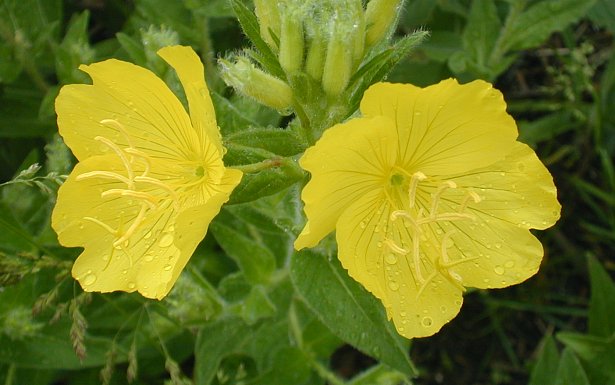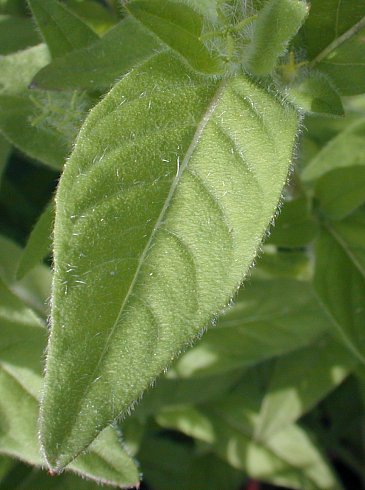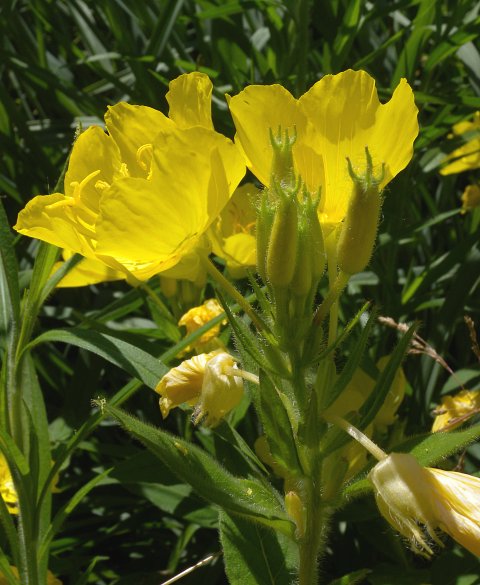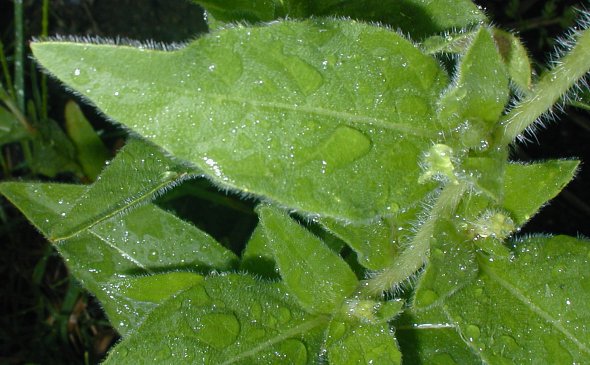Description: This herbaceous perennial plant is up to 2' tall and sometimes bushy. The stems are covered with conspicuous white hairs. The sessile alternate leaves are up to 3" long and 1" wide, lanceolate or ovate, with margins that are toothless and ciliate. The leaves are light to medium green and they are pubescent on both the upper and lower surfaces. The inflorescence at the top of the plant consists of a short cluster of flowers and elongated buds. These flowers are individually about 1½–2" across when they are fully open. Each flower has four large yellow petals.

The petals have fine translucent lines that radiate from the center of the flower. These lines function as nectar guides, and they are more visible to insects than humans in the ultraviolet spectrum. Large showy stamens are exserted above the petals. The blooming period occurs during late spring or early summer and lasts about a month. The short-lived flowers bloom during the day and they have a pleasant fragrance; a succession of such flowers are produced. The seeds lack tufts of hairs, while the root system is highly rhizomatous. In disturbed areas, colonies of plants are readily formed. The new growth during early spring and older foliage during the fall often acquire reddish tints.

Cultivation:
The
preference is full sun, moist conditions, and a loamy soil with high
organic content. This plant develops quickly during the spring and
flowers readily. Later in the year, it becomes dormant and less
attractive in appearance, but it can tolerate some drought. This plant
is
easy to grow if it is not too dry, and it can spread aggressively in
some garden situations.
Range & Habitat:
The native Prairie Sundrops occurs occasionally in the majority of
counties in
Illinois; it is uncommon or absent in central and NW Illinois (see Distribution
Map). Habitats include moist to mesic black soil prairies,
edges of pothole marshes, abandoned pastures, and prairie remnants
along railroads.

Faunal Associations: The flowers are pollinated primarily by long-tongued bees, butterflies, and skippers. Halictid bees and Syrphid flies often visit the flowers, but they are attracted by the abundant pollen and cannot be considered very effective at pollination. Among the long-tongued bees, are such visitors as little carpenter bees (Ceratina spp.) and Leaf-cutting bees (Megachile spp.), which suck nectar or collect pollen. Occasionally, evening primroses and sundrops (Oenothera spp.) are feed on by aphids, the larvae of Momphid moths (Mompha spp.), and other insects. The larvae of different species of Momphid moths mine leaves and bore into stems, flower buds, and seed capsules. Among vertebrate animals, the foliage is eaten occasionally by rabbits (personal observation) and probably other mammalian herbivores.

Photographic
Location:
The photographs were taken at the webmaster's wildflower garden in
Urbana, Illinois.
Comments:
This lovely plant should be grown more often. During the 19th century,
this was a more popular garden plant, but it has since passed from
favor and it is not widely available. Prairie Sundrops resembles Oenothera
fruticosa, but differs from the latter by its hairier leaves.
The latter species has a range that lies east and south of Illinois,
and it is widely available through horticultural sources.